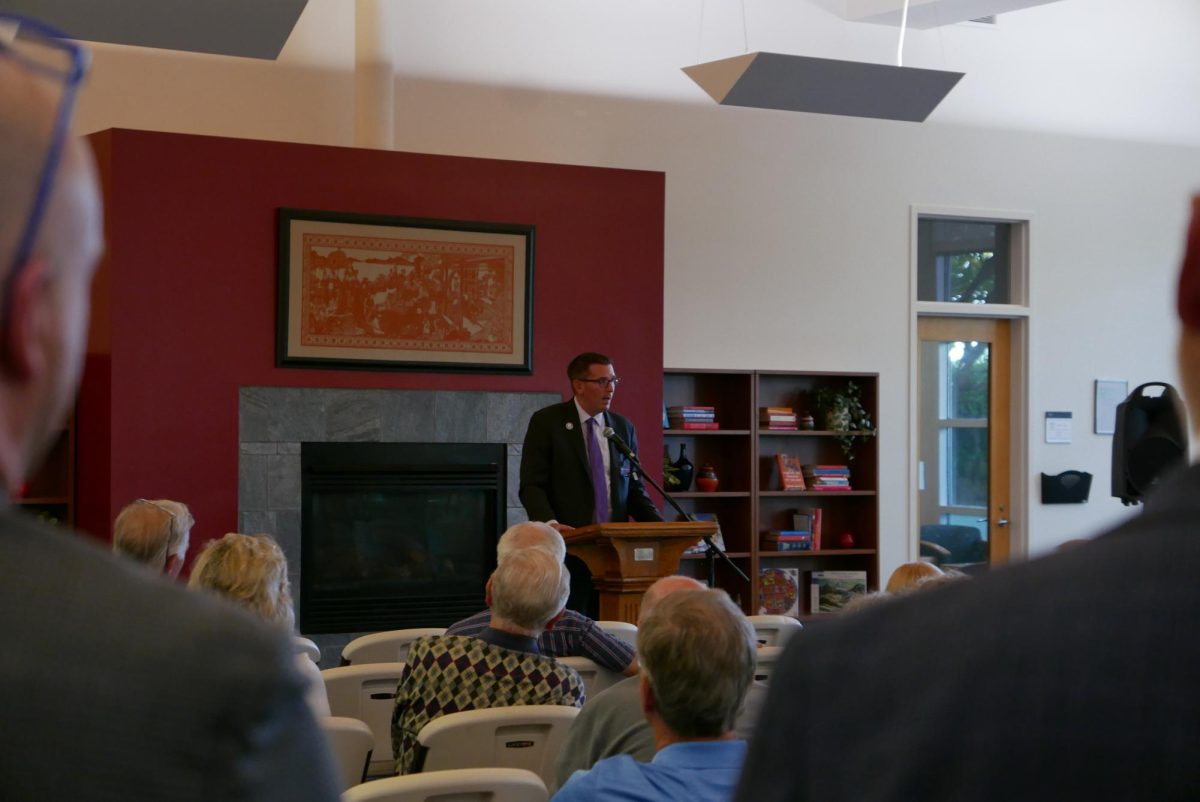College students filling out their dormitory housing requests this summer are making decisions about their future roommate: Messy or neat? Smoker or non? Early bird or night owl?
Now many of them have a new question to ponder: Male or female?
Across the country, colleges are changing the roommate rules and allowing men and women to share a bedroom. Only a small portion of students are choosing the option, college officials say. And when they do, the arrangements almost always are platonic.
But the shift marks the next step in a decades-long evolution that’s shrunk the space that once separated the sexes on college campuses.
“Back in the dark ages, a co-ed dorm was separate floors (for men and women) with an RA making sure you didn’t have guys on your floor after a certain time,” said Vicky Jones, a Bay Area homemaker who graduated from UCLA in 1974.
Then came co-ed floors. And then co-ed bathrooms.
Now Jones’ daughter Kendall goes to Occidental College in Los Angeles, where she roomed with a male friend her sophomore year. Occidental is one of more than 50 colleges across the nation that offer what’s described as “gender-inclusive” or “gender-neutral” housing _ rooms or suites shared by male and female students.
“My main reason for choosing gender-neutral housing was simply feeling more comfortable with a guy as a roommate,” Kendall Jones, 20, wrote in an e-mail interview with The Bee.
Kendall Jones grew up with three brothers and said she was fed up with female energy after a freshman year in which she was one of three girls squeezed into a room built for two.
“It made me cringe to think about living with a girl the next year, so when I found out there was another option I jumped at the chance,” she wrote.
Jones chose to live with her friend James Case. He said they were compatible because they have similar lifestyles and the same tolerance for mess. There was nothing awkward about it, Case said.
“When one of us would change, you’d say, ‘Hey turn around for 10 seconds.’ It really wasn’t complicated,” he said.
Other schools that allow men and women to room together include the University of California, Berkeley, the University of California, Riverside, Stanford, Humboldt State and the University of Oregon. The University of California, Davis, officials said they will research the option in the coming year.
College housing officials say mixed housing hasn’t led to increases in sexual violence. Most schools limit mixed-gender rooms to specific buildings or floors. They assign students to mixed rooms only when both people request it.
And it’s generally not couples who are asking to share a room. The requests tend to come from gay and lesbian students who feel awkward being paired with a roommate of the same sex, or from transgender students who feel their identity makes it difficult to fit into a typical dorm setting.
“It’s been a natural progression in university housing,” said Marty Takimoto, a University of California, Berkeley, housing director. “Students, as the customers, are the determiners of their living situation.”
About 10 students on the Berkeley campus lived in mixed-gender rooms last year, Takimoto said—out of a residential population of 5,900. And all the mixed-gender rooms are in Unity House, a dormitory designated for people who care about issues of sexuality and gender identity.
One resident was Rose DeLeon-Foote, 19, of Sacramento. She said she is not a lesbian but wanted to live in Unity House because she is passionate about gay rights. She shared a room with a transgender man, who was born female but identifies as male.
“I have a lot of close friends that are gay,” DeLeon-Foote said. “I thought Unity would be fun, it would be a place for me to get some friends at Cal.”
The gender-neutral housing at Humboldt State is also in a section of the dorms reserved for people who are gay or care about gay issues. Sophomore Corrina Wells, who described herself as a lesbian, said she enjoyed sharing a room with a gay male friend _ for the most part.
“There’s the classic boy stuff, where the room smells like boy or there’s a pile of laundry,” said Wells, 19. “But after a while I got comfortable with it.”
Making gay students more comfortable is part of the drive for mixed-gender housing, but not the entire story, said David Norton, executive director of the National Student Genderblind Campaign, which helps students lobby for gender-neutral housing. He co-founded the campaign when he was in college and was forbidden from sharing a room with a woman who had been his best friend since middle school.
“Many best friends these days are opposite genders,” said Norton, 24. “It doesn’t make sense to have a policy that makes it so you can’t live with the person you feel most comfortable living with.”
Occidental student Laura Harmon was able to share a room with her best friend, a straight guy. The mixed-gender housing at her school is advertised as being a good option for gay students—but not restricted to them.
“We kind of felt like we were taking advantage of the system as two straight people,” she said.
Now, as they plan housing for their senior year, Harmon has decided to rent a house off-campus with a group of women. And her former roommate will be in a campus suite, full of men.
___________________________________________________________________________________________
Laurel Rosenhall/McClatchy Newspapers






